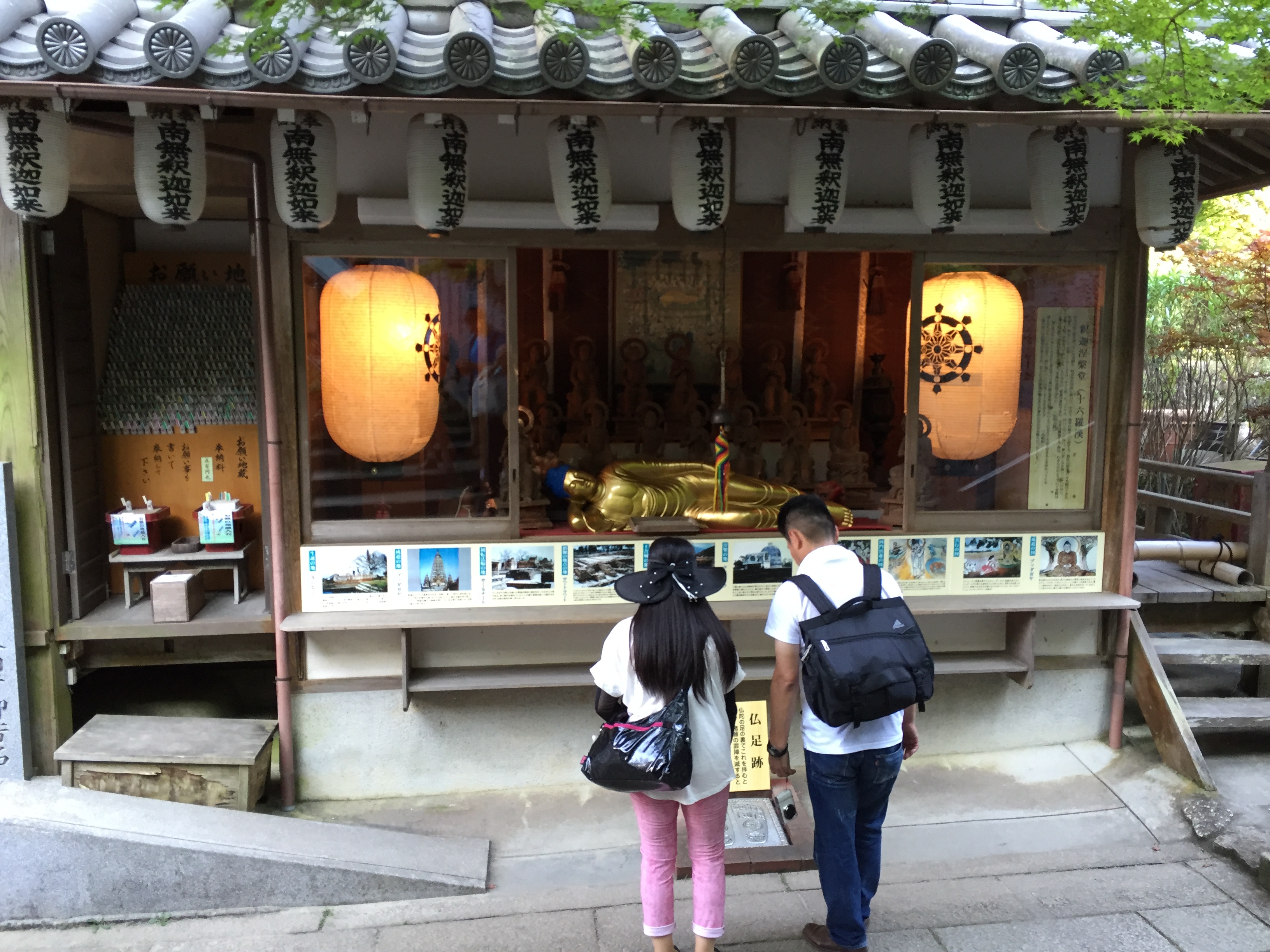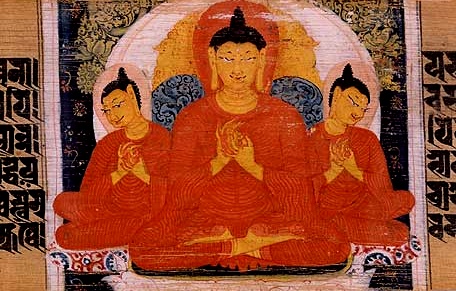|
Dhutanga
Dhutanga (Pali ''dhutaṅga,'' si, ධුතාඞ්ග) or dhūtaguṇa (Sanskrit) is a group of austerities or ascetic practices taught in Buddhism. The Theravada tradition teaches a set of thirteen dhutangas, while Mahayana Buddhist sources teach a set of twelve dhūtaguṇas.Dayal, Har (1970). ''The Bodhisattva Doctrine in Buddhist Sanskrit Literature'', pp. 134-135. Motilal Banarsidass Publ. The term is generally understood to be derived from the root ''dhu'' "to shake" and could mean practices which help one "shake off" the defilements. Thus, the dhutangas are meant help eliminate the defilements in the mind, and thus to deepen Buddhist practice. Their aim is to help the practitioner to develop detachment with material things including the body. Dhutanga practice is not considered a necessary requirement for a monk as is Śīla (virtue). Theravada Buddhism As these thirteen ascetic practices are mentioned in the Pali Tipitaka merely by its name, the '' Visuddhimagga'' ... [...More Info...] [...Related Items...] OR: [Wikipedia] [Google] [Baidu] |
Mahākāśyapa
Mahākāśyapa ( pi, Mahākassapa) was one of the principal disciples of Gautama Buddha. He is regarded in Buddhism as an enlightened disciple, being foremost in ascetic practice. Mahākāśyapa assumed leadership of the monastic community following the '' paranirvāṇa'' (death) of the Buddha, presiding over the First Buddhist Council. He was considered to be the first patriarch in a number of Early Buddhist schools and continued to have an important role as patriarch in the Chan and Zen traditions. In Buddhist texts, he assumed many identities, that of a renunciant saint, a lawgiver, an anti-establishment figure, but also a "guarantor of future justice" in the time of Maitreya, the future Buddhahe has been described as "both the anchorite and the friend of mankind, even of the outcast". In canonical Buddhist texts in several traditions, Mahākāśyapa was born as Pippali in a village and entered an arranged marriage with a woman named Bhadra-Kapilānī. Both of them aspired ... [...More Info...] [...Related Items...] OR: [Wikipedia] [Google] [Baidu] |
Bodhisattva
In Buddhism, a bodhisattva ( ; sa, 𑀩𑁄𑀥𑀺𑀲𑀢𑁆𑀢𑁆𑀯 (Brahmī), translit=bodhisattva, label=Sanskrit) or bodhisatva is a person who is on the path towards bodhi ('awakening') or Buddhahood. In the Early Buddhist schools as well as modern Theravada Buddhism, a bodhisattva ( Pali: ''bodhisatta'') refers to someone who has made a resolution to become a Buddha and has also received a confirmation or prediction from a living Buddha that this will be so. In Mahayana Buddhism, a bodhisattva refers to anyone who has generated '' bodhicitta'', a spontaneous wish and compassionate mind to attain Buddhahood for the benefit of all sentient beings. Mahayana bodhisattvas are spiritually heroic persons that work to attain awakening and are driven by a great compassion (''mahakaruṇā''). These beings are exemplified by important spiritual qualities such as the "four divine abodes" ('' brahmaviharas'') of loving-kindness (''metta''), compassion ('' karuṇā''), emp ... [...More Info...] [...Related Items...] OR: [Wikipedia] [Google] [Baidu] |
Theravada
''Theravāda'' () ( si, ථේරවාදය, my, ထေရဝါဒ, th, เถรวาท, km, ថេរវាទ, lo, ເຖຣະວາດ, pi, , ) is the most commonly accepted name of Buddhism's oldest existing school. The school's adherents, termed Theravādins, have preserved their version of Gautama Buddha's teaching or '' Buddha Dhamma'' in the Pāli Canon for over two millennia. The Pāli Canon is the most complete Buddhist canon surviving in a classical Indian language, Pāli, which serves as the school's sacred language and ''lingua franca''.Crosby, Kate (2013), ''Theravada Buddhism: Continuity, Diversity, and Identity'', p. 2. In contrast to ''Mahāyāna'' and ''Vajrayāna'', Theravāda tends to be conservative in matters of doctrine (''pariyatti'') and monastic discipline (''vinaya''). One element of this conservatism is the fact that Theravāda rejects the authenticity of the Mahayana sutras (which appeared c. 1st century BCE onwards). Modern Theravāda ... [...More Info...] [...Related Items...] OR: [Wikipedia] [Google] [Baidu] |
Maitreya
Maitreya (Sanskrit: ) or Metteyya (Pali: ), also Maitreya Buddha or Metteyya Buddha, is regarded as the future Buddha of this world in Buddhist eschatology. As the 5th and final Buddha of the current kalpa, Maitreya's teachings will be aimed at reinstating the dharma, a vital concept in Hinduism, Buddhism, Sikhism and Jainism. In all branches of Buddhism, he is viewed as the direct successor of Gautama Buddha. In some Buddhist literature, such as the '' Amitabha Sutra'' and the ''Lotus Sutra'', he is referred to as Ajita. Despite many religious figures and spiritual leaders claiming to be Maitreya throughout history, all Buddhists firmly agree that these were false claims, indicating that Maitreya, the Buddha of the Future, is yet to appear. According to Buddhist tradition, Maitreya is a bodhisattva who is prophesied to appear on Earth, achieve complete Enlightenment, and teach the Dharma. According to scriptures, Maitreya's teachings will be similar to those of Gautama Buddh ... [...More Info...] [...Related Items...] OR: [Wikipedia] [Google] [Baidu] |
Nirodha-samāpatti
In the oldest texts of Buddhism, ''dhyāna'' () or ''jhāna'' () is a component of the training of the mind ('' bhavana''), commonly translated as meditation, to withdraw the mind from the automatic responses to sense-impressions, "burn up" the defilements, and leading to a "state of perfect equanimity and awareness ('' upekkhā-sati- parisuddhi'')." ''Dhyāna'' may have been the core practice of pre-sectarian Buddhism, in combination with several related practices which together lead to perfected mindfulness and detachment. In the later commentarial tradition, which has survived in present-day Theravāda, ''dhyāna'' is equated with "concentration", a state of one-pointed absorption in which there is a diminished awareness of the surroundings. In the contemporary Theravāda-based Vipassana movement, this absorbed state of mind is regarded as unnecessary and even non-beneficial for the first stage of awakening, which has to be reached by mindfulness of the body and ''vipassan ... [...More Info...] [...Related Items...] OR: [Wikipedia] [Google] [Baidu] |
Paranirvana
In Buddhism, ''parinirvana'' (Sanskrit: '; Pali: ') is commonly used to refer to nirvana-after-death, which occurs upon the death of someone who has attained ''nirvana'' during their lifetime. It implies a release from '' '', karma and rebirth as well as the dissolution of the ''skandhas''. In some Mahāyāna scriptures, notably the ''Mahāyāna Mahāparinirvāṇa Sūtra'', ''parinirvāṇa'' is described as the realm of the eternal true Self of the Buddha. In the Buddha in art, the event is represented by a reclining Buddha figure, often surrounded by disciples. Nirvana after death In the Buddhist view, when ordinary people die, each person's unresolved karma passes on to a new birth instantaneously; and thus the karmic inheritance is reborn in one of the six realms of '' samsara''. However, when a person attains nirvana, they are liberated from karmic rebirth. When such a person dies, it is the end of the cycle of rebirth, the Samsara and the Karma. Contemporary scholar R ... [...More Info...] [...Related Items...] OR: [Wikipedia] [Google] [Baidu] |
Sangha
Sangha is a Sanskrit word used in many Indian languages, including Pali meaning "association", "assembly", "company" or "community"; Sangha is often used as a surname across these languages. It was historically used in a political context to denote a governing assembly in a republic or a kingdom, and has long been used by religious associations including the Buddhists, Jains and Sikhs. Given this history, some Buddhists have said the tradition of the ''sangha'' represents humanity's oldest surviving democratic institution. In Buddhism, ''sangha'' refers to the monastic community of ''bhikkhu'' (monks) and '' bhikkhuni'' (nuns). These communities are traditionally referred to as the ''bhikkhu-sangha'' or ''bhikkhuni-sangha''. As a separate category, those who have attained any of the four stages of enlightenment, whether or not they are members of the monastic community, are referred to as the ''āryasaṅgha'' ("noble Sangha"). According to the Theravada school and Nich ... [...More Info...] [...Related Items...] OR: [Wikipedia] [Google] [Baidu] |
Jhana
In the oldest texts of Buddhism, ''dhyāna'' () or ''jhāna'' () is a component of the training of the mind (''bhavana''), commonly translated as meditation, to withdraw the mind from the automatic responses to sense-impressions, "burn up" the defilements, and leading to a "state of perfect equanimity and awareness ('' upekkhā-sati- parisuddhi'')." ''Dhyāna'' may have been the core practice of pre-sectarian Buddhism, in combination with several related practices which together lead to perfected mindfulness and detachment. In the later commentarial tradition, which has survived in present-day Theravāda, ''dhyāna'' is equated with "concentration", a state of one-pointed absorption in which there is a diminished awareness of the surroundings. In the contemporary Theravāda-based Vipassana movement, this absorbed state of mind is regarded as unnecessary and even non-beneficial for the first stage of awakening, which has to be reached by mindfulness of the body and ''vipass ... [...More Info...] [...Related Items...] OR: [Wikipedia] [Google] [Baidu] |
Sanskrit Language
Sanskrit (; attributively , ; nominally , , ) is a classical language belonging to the Indo-Aryan branch of the Indo-European languages. It arose in South Asia after its predecessor languages had diffused there from the northwest in the late Bronze Age. Sanskrit is the sacred language of Hinduism, the language of classical Hindu philosophy, and of historical texts of Buddhism and Jainism. It was a link language in ancient and medieval South Asia, and upon transmission of Hindu and Buddhist culture to Southeast Asia, East Asia and Central Asia in the early medieval era, it became a language of religion and high culture, and of the political elites in some of these regions. As a result, Sanskrit had a lasting impact on the languages of South Asia, Southeast Asia and East Asia, especially in their formal and learned vocabularies. Sanskrit generally connotes several Old Indo-Aryan language varieties. The most archaic of these is the Vedic Sanskrit found in the Rig Veda, a col ... [...More Info...] [...Related Items...] OR: [Wikipedia] [Google] [Baidu] |
Ṛddhi
''Iddhi'' (Pali; Sanskrit: ''rddhi'') in Buddhism refers to "psychic powers", one of the six supranormal powers (''abhijñā'') attained by advanced meditation through the four ''dhyānas''. The main sense of the word seems to be "potency". List of iddhi powers According to Bowker, there are eight ''iddhi'' powers: # Replicate and project bodily images of oneself, # Make oneself invisible, # Pass through solid objects, # Sink into solid ground, # Walk on water, # Fly, # Touch the sun and moon with one's hand, # Ascend to the world of the god Brahmā in the highest heavens According to the Iddhipada-vibhanga Sutta (SN 51.20) # Having been one he becomes many; having been many he becomes one. # He appears. He vanishes. # He goes unimpeded through walls, ramparts, & mountains as if through space. # He dives in and out of the earth as if it were water. # He walks on water without sinking as if it were dry land. # Sitting crosslegged he flies through the air like a winge ... [...More Info...] [...Related Items...] OR: [Wikipedia] [Google] [Baidu] |
Arahat
In Buddhism, an ''arhat'' (Sanskrit: अर्हत्) or ''arahant'' (Pali: अरहन्त्, 𑀅𑀭𑀳𑀦𑁆𑀢𑁆) is one who has gained insight into the true nature of existence and has achieved ''Nirvana'' and liberated from the endless cycle of rebirth. Mahayana Buddhist traditions have used the term for people far advanced along the path of Enlightenment, but who may not have reached full Buddhahood. The understanding of the concept has changed over the centuries, and varies between different schools of Buddhism and different regions. A range of views on the attainment of arhats existed in the early Buddhist schools. The Sarvāstivāda, Kāśyapīya, Mahāsāṃghika, Ekavyāvahārika, Lokottaravāda, Bahuśrutīya, Prajñaptivāda, and Caitika schools all regarded arhats as imperfect in their attainments compared to buddhas.Sree Padma. Barber, Anthony W. ''Buddhism in the Krishna River Valley of Andhra''. 2008. p. 44Warder, A.K. ''Indian Buddhism'' ... [...More Info...] [...Related Items...] OR: [Wikipedia] [Google] [Baidu] |



.jpg)






